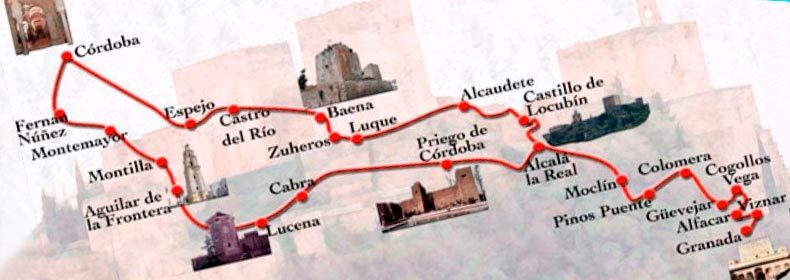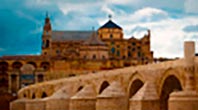The route of the Caliphate within the Andalusí Legacy connects the cities of Cordoba and Granada, crossing lands of Jaen. The itinerary wanders through a beautiful and fertile countryside, and joins many villages with a large monumental and artistic heritage, and places that were witnesses of the relation in peace and in conflict between the Muslim and Christians kingdoms.

It joins fortresses, castles and some fortresses with Muslim and Christian parts perched on mountain tops. The traveller will also be able to admire the beautiful and hilly scenery of the Natural Park of the Cordovan Subbetica range. In these surroundings we find rough slopes next to meadows and riversides, ideal for peaceful excursions following ancient paths.
This route, that connects the cities of - Al-Andalus caliph and nazarie – Cordoba-Granada- was one of the most used in the Iberian Peninsula during the Middle Ages. It was used by merchants from all over the known world, who supplied and commerced with these important centers of population; it was also the road of Knowledge, Sciences and the Arts.
Cordoba was the metropolis of the knowledge of the Western Moslem during the Caliph period. It was one of the most advanced in its time, and in the words of CH. E. Dufourq: Never before, neither Rome nor Paris, the most populated cities of the western Christian medieval, got anywhere near the splendor of Cordoba, the largest urban nucleus in medieval Europe.
With this remembrance, the Caliphate Route tries to strengthen a link between the three provinces it traverses – Cordoba, Jaen and Granada – and wants to function as a motor development of the towns and areas included in the route. The Nazarie city, Granada, and the Alhambra, the most precious jewel of the Muslim-Spanish architecture, are the final stops in this route.
The settlements of different civilizations and a remote past give Granada de character of cultural melting pot which is noticeable in the numerous monuments of different historical periods. The refined andalusí spirit, evident in the architectural forms and gardens of the period, the language of the stones in the monuments of Renaissance style and the apparent fragility of the flamboyant Gothic, conform a polyhedral space that always charms the traveller.












